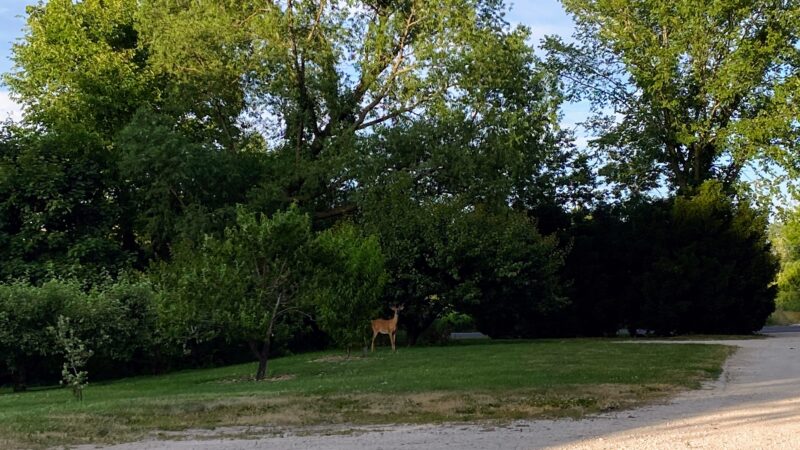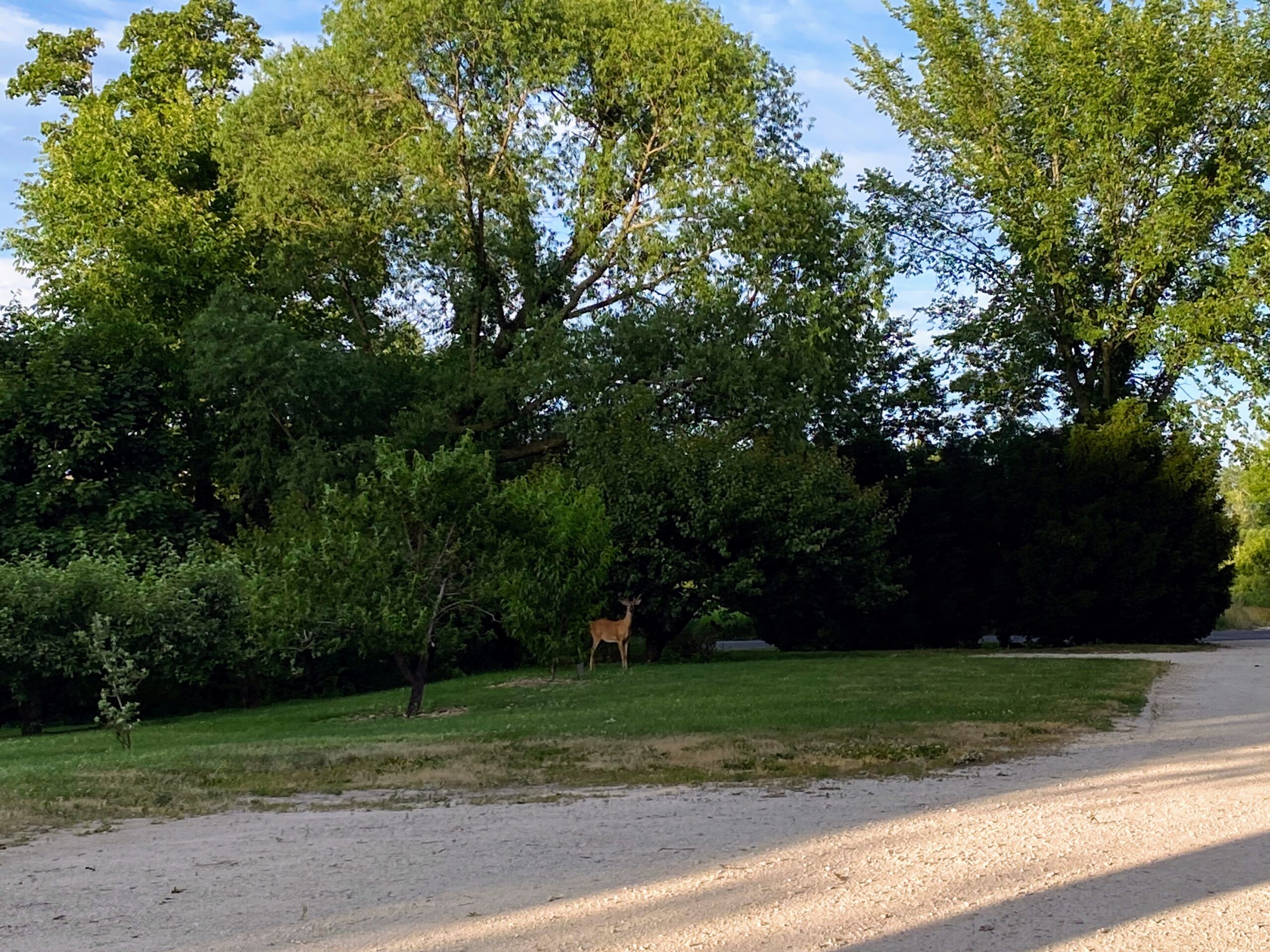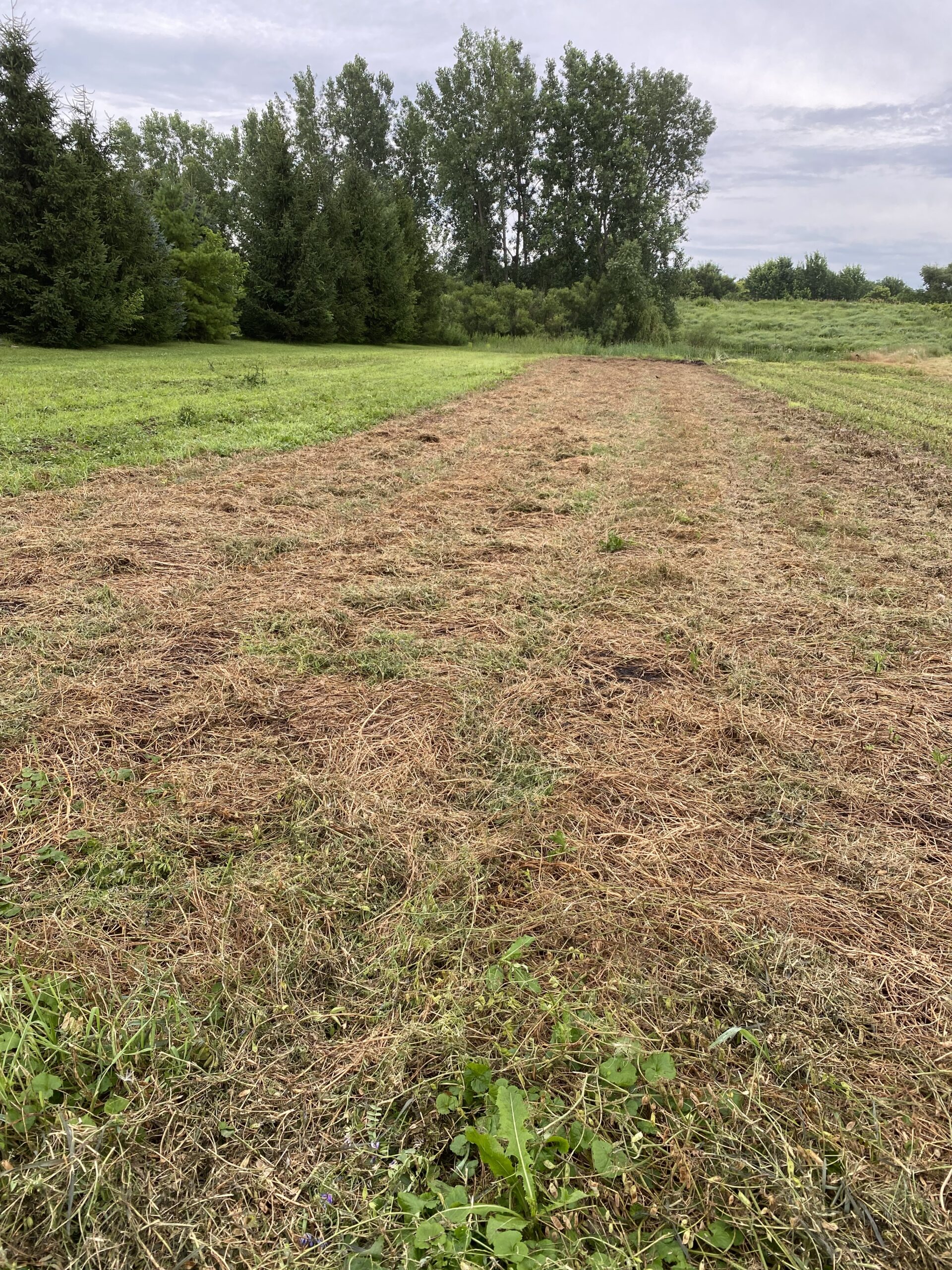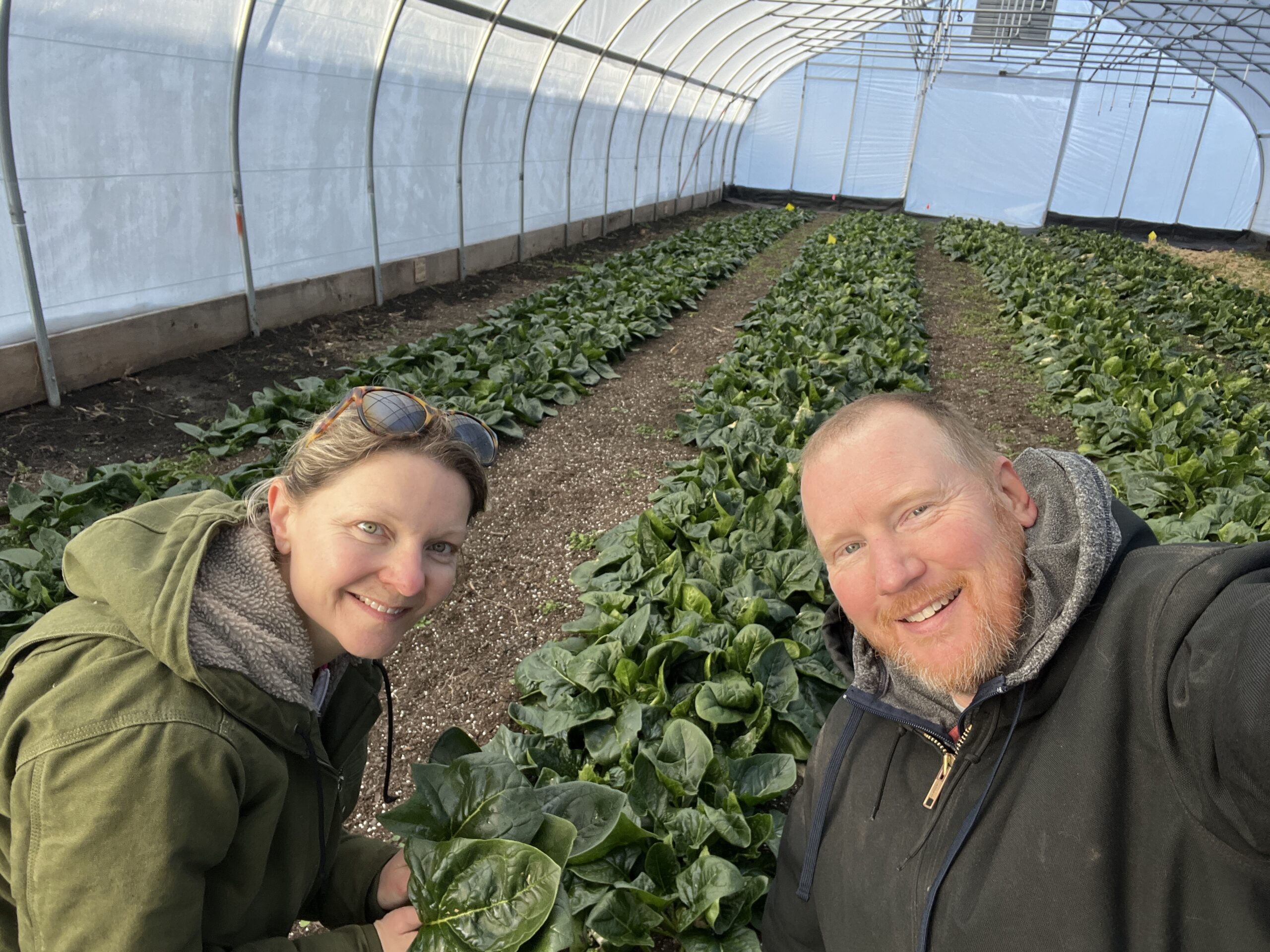

2017 flash floods
This weekend, Jeff and I jokingly played the game “Would You Rather” to discuss challenging farming seasons and compare them against each other.
Which would you rather: the 2023 drought or the 2024 warm winter and non-stop wetness?
Which would you rather: the 2023 microburst destroying hoophouses or the 2017 flash flooding drowning our fields for weeks?
This game made us laugh out loud as we discussed funny aspects of the event or how we coped. It also made us realize we take on whatever challenge is thrown our way.

Oh, deer!

2023 winter fields

Cover crop serving as a natural mulch
So, how can there be a bright side? We strive to consider the contributions plants made for us along the way. The cover crops did their job and kept the soil in place throughout wind and rain all while capturing carbon and moisture. The plants built and provided habitat for mycorrhizal fungi which are vital to plant growth. These fungi increase pathogen resistance, drought tolerance, and water and nutrient uptake. The crops were incorporated back into the soil as “green manure” feeding the soil nutrients and preparing the soil for the next crops.

The lessons learned continue to build upon our now nearly 19 years of adaptation and learning process as farmers. These challenges won’t stop us from improving the soil, improving our crop selections, and improving our resilience. Thank you for supporting local farmers throughout every challenge, as we strive to learn and help feed our community!
Your farmers,
~Jeff, Jen, Cleto, David, Anacleto, Miguel, and the Liberty Prairie team
